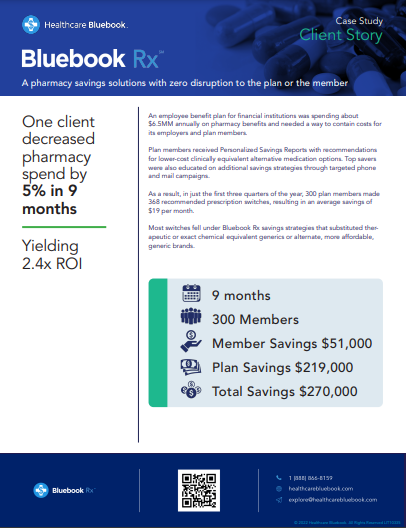 Glucagon-like peptide-1 (GLP-1) weight loss drugs have become increasingly popular for patients living with obesity and/or diabetes. These medications can positively impact a patient’s health, but may also come with potentially negative effects. Today, we’re taking a close look at the various effects of GLP-1s and how employers can help manage costs from the massive growth in spending on this class of drugs.
Glucagon-like peptide-1 (GLP-1) weight loss drugs have become increasingly popular for patients living with obesity and/or diabetes. These medications can positively impact a patient’s health, but may also come with potentially negative effects. Today, we’re taking a close look at the various effects of GLP-1s and how employers can help manage costs from the massive growth in spending on this class of drugs.
Positive Impacts of GLP-1s
Many of us have heard a lot about GLP-1s but may not realize the impact they can have on those who use them.
Improved Employee Health
GLP-1s can help people lose 15-20 percent of their body weight. This can help patients manage and potentially even reverse their metabolic disorder and reduce risk for serious health conditions such as diabetes, high blood pressure, high cholesterol, heart disease, heart failure, kidney disease, and more. The reduced risk of chronic conditions means fewer specialist visits and less time off work, which can translate into improved performance and overall less healthcare spend.
Effective weight management should also include lifestyle modifications regarding diet and exercise. If an employee incorporates these strategies into their weight management goals alongside GLP-1 weight loss drugs, it can have an even greater impact on their health and performance.
Reduction of Medical Costs
Reducing medical costs for employers and employees alike is critical. Although GLP-1s are costly (we’ll discuss how to manage costs below), they can also help prevent the development of chronic conditions that lead to hospital admissions, specialist visits, and even more prescription drugs to treat conditions that arise from obesity.
Enhanced Quality of Life
Reducing body weight and improving metabolic health can improve a person’s mood, boost their mental health, and increase their self-esteem, which can greatly impact their personal outlook and social life. At the same time, by losing weight, they also reduce the potential for costly chronic conditions, which can lead to financial relief.
Negative Impacts of GLP-1s
As with any medication, there are potential negative impacts on cost, health, and other areas.
Increased Prescription Drug Costs
Some patients may have to stay on GLP-1s for an extended period or for life. In addition to this, GLP-1 prescriptions cost up to $1,350 before insurance and rebates.
With 42 percent of Americans living with obesity, demand for these drugs is skyrocketing, but the high price tag can be prohibitive. Many employers cover the cost of GLP-1s when they are used to treat type 2 diabetes, but hesitate to cover them for obesity.
A great way to reduce pharmacy spend is by implementing a pharmacy savings program, which can help reduce costs for the majority of prescription medications—not just GLP-1 weight loss drugs. Bluebook Rx™ evaluates claims data to find opportunities for members and the plan sponsor to save on prescriptions and sends a personalized savings report to members with strategies to reduce costs. Additionally, members can receive personalized guidance from a licensed pharmacy team, which can potentially save them thousands of dollars.
Unknown Side Effects
There are a lot of unknowns about how the benefits of these drugs compare to the long-term side effects when used to treat obesity alone. According to research, 82 percent of people taking GLP-1s experience mild-to-moderate gastrointestinal side effects.
Rapid weight loss associated with GLP-1 medications can also lead to loss of lean muscle mass. A hypo-caloric diet with adequate protein intake and increased physical activity (particularly resistance-type exercise) should be promoted to maintain muscle mass and improve muscle strength and physical function while taking GLP-1s.
Concerns About Equity, Supply, Demand, and Ethics
Who should have access to GLP-1s? Ongoing shortages of these drugs have led to questions about who should be able to access them to ensure there is availability for those who truly need them. However, many direct-to-consumer companies aggressively market GLP-1 drugs specifically for weight loss and have little to no medical oversight. Additionally, many people can’t afford to pay for GLP-1 drugs out of pocket. Eventually, this could increase the health equity gaps that already impact those with obesity.
Ready to Improve Employee Well-Being While Reducing Pharmacy Spend?
GLP-1 drugs and other prescriptions lead to increased pharmacy spend for members and employers. Read our Bluebook Rx case study to find out how to improve employee well-being while reducing spending.
